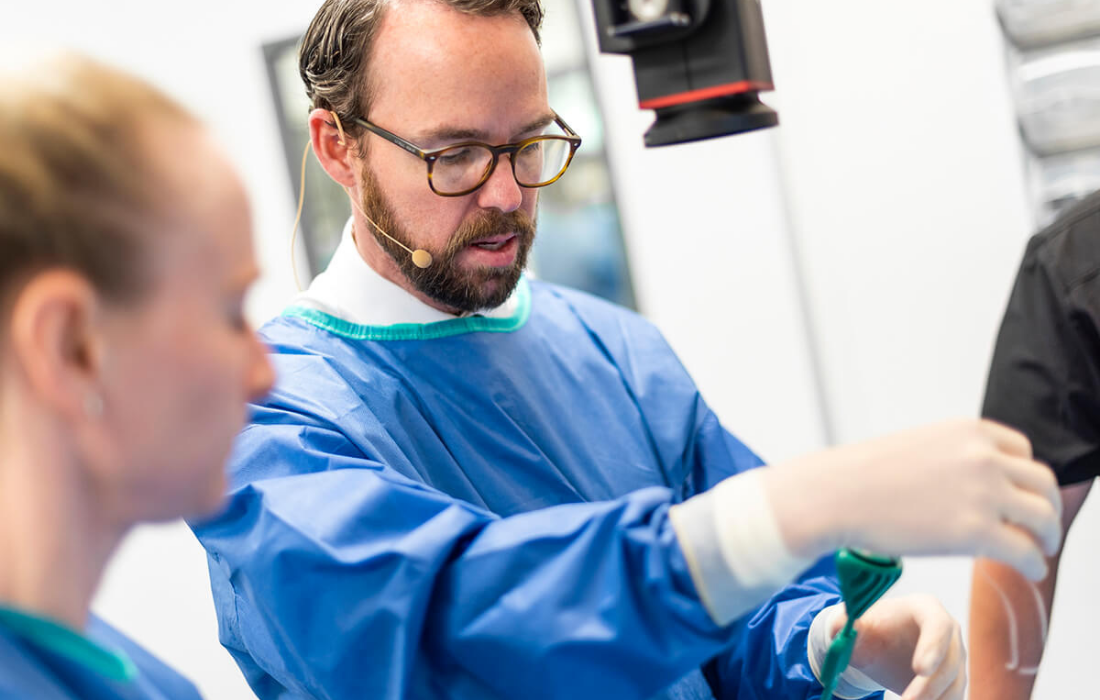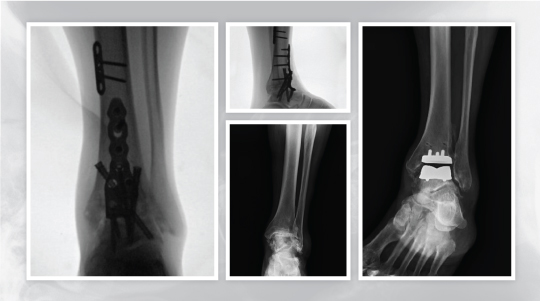Forefoot Injuries
What is the forefoot?
The forefoot is a vital part of the foot structure that balances and carries half of the body’s total weight. It is one of the three main regions of the foot, which also includes the rearfoot (hindfoot) and midfoot.
The forefoot is made up of tendons, ligaments, soft tissues and 19 bones, 14 of which make up the toes (phalanges). Tendons, blood vessels and nerves pass under the heads (ends) of the metatarsal bones. The complex network of ligaments in the foot help:
- Connect skin and bones
- Insulate and support the foot by securing fat in place for cushion
- Tie the arches of the foot
Phalanges
Four of the five toes are made up of three phalanx bones:
- Distal phalanx, the first bone in the toe (the tip of the toe)
- Intermediate phalanx, the middle toe bone
- Proximal phalanx, the last and largest toe bone
The big toe—also known as the hallux—is only made up of a distal phalanx and proximal phalanx.
Metatarsals
In addition to the phalanges, the forefoot also contains five metatarsal bones that connect to the proximal phalanges at joints located in the ball of the foot. These bones line up next to one another in the middle of the foot and are named based on where they are in comparison to the big toe, with the first metatarsal behind the big toe and the fifth metatarsal behind the pinky toe.
What are some common conditions of the forefoot?
Fractured Toe Bones
Fractured bones in the toe are one of the most common conditions of the forefoot. A fracture is typically caused by stubbing a toe or something heavy hitting a toe (e.g., dropping an object on the foot). Symptoms of a fractured toe bone include:
- Bruising
- Deformity of the toe
- Difficult walking
- Pain and swelling
- Stiffness
Hammertoes
Hammertoes occur when weakened muscles in the toes let the tendons shrink, which pulls one or more toes back toward the foot. This causes the joint to become elevated, resulting in the “hammered” appearance. This most commonly occurs with the toe next to the big toe.
Hammertoes can be caused by wearing improper footwear, certain nerve conditions (e.g., diabetic neuropathy) or trauma to the foot.
Osteoarthritis
Osteoarthritis is a condition that causes that cartilage in joints to wear away over time, resulting in bones grinding against one another. This can cause symptoms including:
- Grating of the joint when it’s in motion
- Swelling and limited movement
- Muscle weakness around the joint
- Pain after exercise or a long period of rest
Metatarsalgia
Any pain that occurs in the forefoot is typically categorized as metatarsalgia. The pain can appear as an aching, burning or shooting pain in the toes or the ball of the foot and can be made worse when walking or running. It’s most commonly caused by an imbalance, abnormal weight distribution or a plantar plate injury. The plantar plate is a specialized thickened ligament connecting the toes to the foot. Morton’s neuroma, a thickening of the issues around one of the nerves that leads to the toes can be another common cause.
Other causes can include congenital or acquired deformities (e.g., bunions), a tight Achilles tendon and poorly-fitted footwear.
Fifth Metatarsal Fracture
Also known as an avulsion fracture or dancer’s fracture, this injury occurs when the ligament attached to the fifth metatarsal pulls away from the base of the bone and takes a piece of the bone with it. This results in pain and swelling on the outside of the foot and is usually caused by a twisting injury to the ankle and foot. A variation of this fracture is called a Jones fracture.
How are injuries of the forefoot treated?
Treatment for these or any other forefoot injury will depend on the condition and its severity, but there are a number of surgical and nonsurgical options available. These include:
- Physical therapy
- Over-the-counter (OTC) and prescription medications to manage pain and swelling
- Resting, icing, compressing and elevating the injury (the RICE method)
- Custom orthotics or orthopedic boots that can be worn to help correct the condition
- Taping certain parts of the foot to aid in healing
- Surgical correction of a condition or surgical repair
For more information about forefoot injuries or to schedule an appointment with one of our foot and ankle specialists, contact us today.




